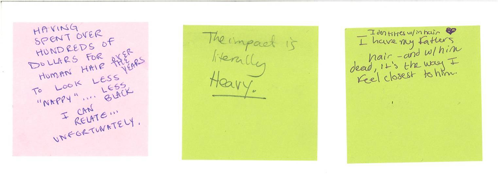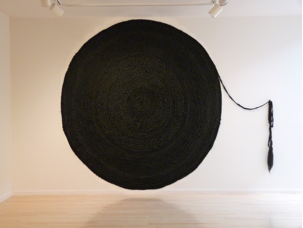By Andrea Taylor
At the Wing Luke Museum of the Asian Pacific American Experience in Seattle, also known as “The Wing,” we have a large and continually growing tours program. Like most museums, we offer an extensive list of programs specifically designed for students as well as regularly offered tours for daily visitors. Anyone interested in coming to The Wing to learn more about Seattle's Asian Pacific American community and the history and cultures of our historic neighborhood, the Chinatown-International District, have many choices to consider when looking at which tour(s) to take. From presenting the history of our community to discussing contemporary issues facing the neighborhood today, our Education staff provides a well-rounded introduction to our story and mission. The content of our tours add to the dialogue on immigration, socioeconomics and race—themes that are tailored to every age level we work with, but show up in almost every tour we have to offer, even Lunar New Year Tours for our kindergarteners. Everything that we do and offer on our tours adds to, as our tagline says, “A uniquely American story.”
I mention that we add to the dialogue on race in almost every tour we provide—but until recently, we never organized tours just about race. Before the opening of Under My Skin: Artists Explore Race in the 21st Century in May of 2013, our team did not have much experience providing tours on just race. Designing curriculum on immigration to the Pacific Northwest and discussing legislation rooted in racism was par for the course for us, but thinking of ways to generally discuss race today and how it is impacting people presented a good challenge. Education staff all knew that the dialogue on race was, and remains, a critical component of our professional and personal lives. Would it be as critical for the students and guests we would eventually tour through this show?
By the time the exhibition opened we already had a number of student tours booked and interest was growing. We were pleasantly overwhelmed by the number of educators contacting us eager to book a tour. Prior to this show, when a group was interested in a gallery tour we had always visited multiple exhibitions in order to fit the thematic needs of the instructor, pulling stories from various communities in order to provide a bigger picture about Asian Pacific American struggles and triumphs. Under My Skin presented an opportunity to provide a new and much simpler format for our gallery tours: showcase just one gallery and one topic. For many, this will not be a revelation, but the complexity of this exhibition greatly changed our approach to simplifying our tour program.
Under My Skin featured 26 artists who presented powerful stories and perspectives about how race has impacted our past and how we can shape a more hopeful future. There was much to be discussed about the artwork itself, but the larger discussion about how race impacts people today became the focal point of our tour. With the support of the City of Seattle’s Race and Social Justice Initiative and the Intergroup Dialogue, Education and Action Center at the University of Washington (IDEA), we designed a tour that utilizes the artwork as a vehicle for talking about race: the history of race in the United States, the complexities of racial identities, and how we must challenge the way we talk and think about race. We also designed the tour in a way that allows room for group dialogue and silent reaction, meaning our staff and docents did not have to speak very much. Instead of speaking to every work of art and providing a lecture-style presentation, we decided it was best to let the audience tell us what they think.
A tour of Under My Skin began with a general introduction to the overall themes of the exhibition and then continued with focus on one particular piece. One of the ideas that came out of our community collaboration was to begin the tour with the docent discussing one piece that personally spoke to them, and why they thought it added to the dialogue on race. We (The Wing museum educators) generally try not to talk about ourselves very much on tours, but it was brought to our attention that if we began the tour creating that personal connection, it could spur active participation from students on how they may see themselves in the artwork. Discussing one particular piece with a group provided an example of what we were going to be doing on the rest of the tour—talking. After students learned a little bit about their guide and why that person was connected with a particular piece, they were encouraged to do the same. Students then read the text panels, observed the artwork, and then talked with their peers about the artwork and how they thought it added to the dialogue on race. The rules we shared were simple: have an open mind, listen, and make sure the conversation stays on the topic of race. For the students uncomfortable talking about race out loud with their peers, we provided pencils and post-its allowing them to react to the artwork by writing down their thoughts and then placing the post-it on the wall. Everyone’s voice was heard, or read. Below is an example of what some participants wrote down after viewing Akiko Jackson’s “Heritage Braided”:
 Far left: “Having spend over hundreds of dollars for human hair over the years to look less “nappy” … less black … I can relate … unfortunately. “
Far left: “Having spend over hundreds of dollars for human hair over the years to look less “nappy” … less black … I can relate … unfortunately. “Middle: “The impact is literally Heavy.”
Far right: “Identities w/in hair. I have my fathers hair – and w/him dead, it’s the way I feel closest to him.”
To wrap up, we gathered everyone back together and asked very simple yet complex, questions to the audience. “Which pieces stood out to you?” “What did you find interesting from this class discussion on race?” “Why do you think talking about race is important today?” We found that compared to the beginning of a tour, students became much more vocal and participatory towards the end of the tour. There was a lot to talk about and tours were not about what guides told them, but instead what students have learned from each other. Watching students talk to each other about the artwork, what they thought it meant, how they thought the pieces spoke to race, accomplished the only goal we had set from the beginning with Under My Skin: talking. In many cases, students who never interacted with each other before were talking about race. Students experienced both positive and negative revelations about each other: the realization that some peers were not ready to talk about race and instead shrouded it with humor, the “discovery” of a mixed-race peer, or the confession of uncomfortable feelings that called for friendly support. From this, we learned that it was hard to call this tour, a “tour.” The “tours” ended up being mini-workshops (and in some ways, mini-therapy) in which there were many shared learning experiences between staff and attendees. We often heard from educators that the tour discussions were great starting points to begin larger conversations about race in the classroom.
We followed this tour design for about six months, through the closing of Under My Skin on November 17, 2013. As we reflect on our time with this new tour model, we have learned the value in keeping our curriculum and tour goals simple. So, where do we go from here? We have begun reevaluating our gallery tour program to simplify curriculum for future tour groups and provide a more interactive, focused visit. This December 2013 we will open Grit: Asian Pacific Pioneers Across the Northwest. We are actively creating a tour curriculum solely focused on the themes of the show so that we may continue to provide in-depth experiences for students of all ages planning to visit The Wing.
Andrea Kim Taylor has been with The Wing since 2010, first as a volunteer, Tour Coordinator and now Tour Manager. She came to Seattle from Alaska, where she earned her M.A. in Cultural Anthropology from the University of Alaska Fairbanks. Outside of providing educational experiences for visitors of all ages to The Wing, Andrea writes book reviews for Hyphen Magazine.









Comments
Thanks for posting what you've learned from this new approach. It reminds me of facilitated dialogue, a technique promoted by the International Sites of Conscience (Wing Luke Museum is a member, yes?). In October I was lucky to take a training sponsored by the National Park Service with Sarah Pharaon from ISC. See http://www.sitesofconscience.org/trainings/ for more on this approach if you don't know it already. Your emphasis on talk seems so reasonable and unfolds so much. What I appreciate most about facilitated dialogue is how the most simple structure around meaningful topics impacts audiences' experiences. Kudos to your team.
I am curious: As you created this tour program were you systematically evaluating it, or more informally with discussions amongst touring staff? Thanks.
Hi Susan, thank you so much.Our team was very excited to read your comment! You are correct, The Wing is a member of ISC, however we were not aware of the facilitated dialogue training. Thank you for sharing this link, we will be sure to refer to it for resources and announcements! We were fortunate to work with the City of Seattle Race and Social Justice Initiative and Prof. Ratnesh Nagda (Univ. of Washington) on facilitated dialogue techniques, their time with us was fantastic. The Initiative also held workshops for people interested in becoming dialogue facilitators when the Pacific Science Center opened "RACE: Are we so different?" exhibition last year. We fully agree with you, a simple structure can open up so many opportunities for deep discussion.
We continue to reflect on how powerful this simple (and sometimes not so simple) act of talking opened up new ideas on race. Also, listening. I was grateful to see how well peers would respectfully listen to stories about how race is impacting people--their friends, teachers, relatives.
To answer your question, we experienced a mixture of evaluation and informal team discussion. We conducted debriefs at the end of every tour and reflected on stories we listened to, ideas that were discussed, and challenged our own questions for groups that received a high response, and also questions that received a low response. I think we were always self-evaluating our tours and editing the types of questions we were asking groups. Since we customize all of our tours according to age, we were in a constant mode of experimenting and editing. Overall, the process was not very formal, we very much adapted ourselves (sometimes on the spot) to how groups were responding to the artwork. I am happy to discuss this further!
Add new comment